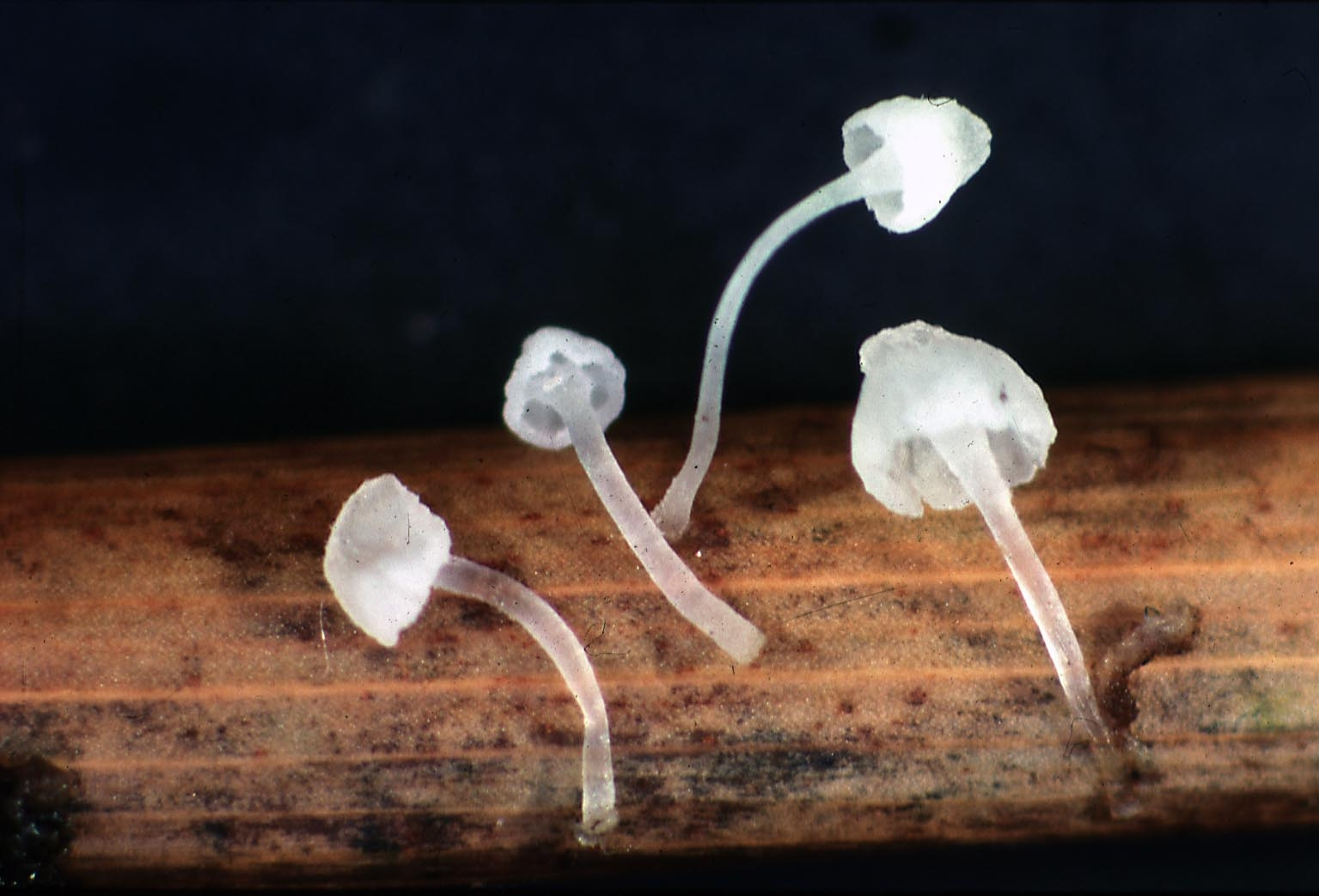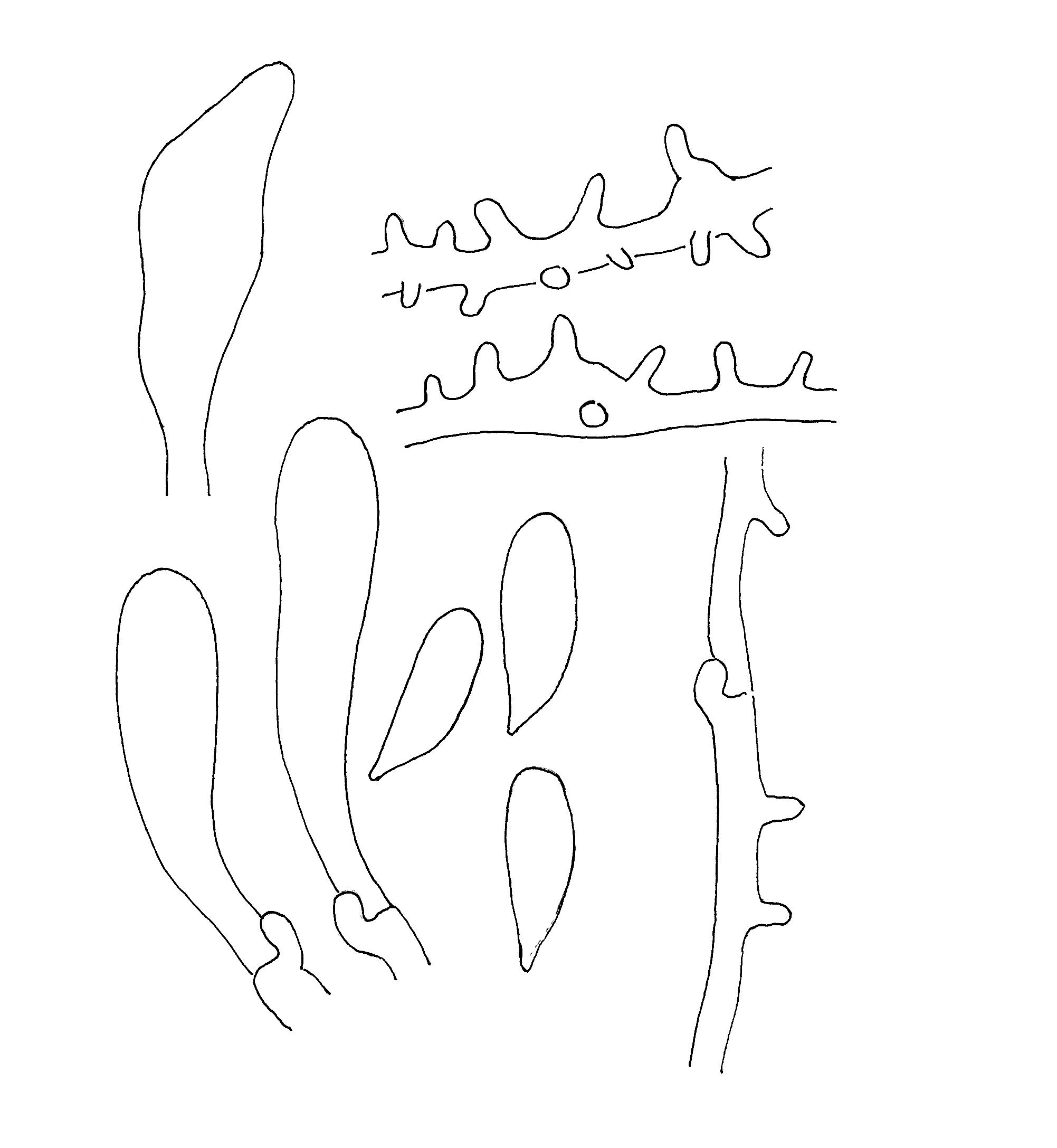Mycena oligophylla
Mycena oligophylla
Description
Cheilocystidia, hyphae of the pileipellis, spores, and hyphae of the cortical layer of the stem.
Cap 0.7-2.3 mm across, hemispherical, conical to parabolical or convex to almost plane, ±depressed or with a small papilla, ±shallowly sulcate, not translucent-striate, minutely pruinose, glabrescent, not lubricous when wet, white, the margin involute at first, straightening with age. Gills 0-5(-6) reaching the stem, rarely fully developed (and then fairly broad), often only showing as low ridges and evanescent before reaching the margin of the cap, broadly adnate to somewhat decurrent, white, the edge almost straight to concave, white. Stem 1-3(-4) x 0.1-0.3 mm, fragile, cylindrical, equal or widened just below the gills, sometimes also broadened near the base, smooth, delicately pruinose all over at first, glabrescent except at the base, white, sometimes seemingly institious but actually attached to the substratum by radiating, fine, whitish fibrils which are united by a very thin film of gelatinous matter to form an irregularly shaped plaque. Odour none, taste not recorded. Basidia 23-27 x 7 µm, clavate, 4-spored, with sterigmata c. 3.5 µm, long. Spores 9.4-10.8 x 3.6-4.5 µm, Q = 2.2-3.4, Qav ˜ 2.6, somewhat narrowly pip-shaped, amyloid. Cheilocystidia 20-27 x 4.5-7 µm, rather scarce, occuring mixed with the basidia, subcylindrical to subfusiform, smooth, apically gradually narrowed. Pleurocystidia absent. Lamellar trama dextrinoid. Hyphae of the pileipellis 3.5-6 µm wide, covered with cylindrical, simple excrescences 2.5-5.5 x 1-2 µm which do not become gelatinized. Hyphae of the cortical layer of the stem 2-2.7 µm wide, not gelatinizing, smooth or sparsely covered with cylindrical, simple excrescences 1.5-7 x 1-2 µm, terminal cells (caulocystidia) variously shaped, 20-40 x 2.5-9 µm, much branched, becoming less branched or even simple and subcylindrical farther upwards the stem, then (just below the gills) gradually passing into cystidia-like, lageniform elements 22.5-35 x 6.5-9 x 3.5-4.5 µm. Clamps present in all tissues.
Ecology and distribution
Growing solitary to scattered on the leaf sheaths deep down in clumps of Juncus conglomeratus, often found together with Mycena bulbosa, more occasionally also together with Hemimycena delectabilis (Peck) Singer on culms of Carex sp. Autumn. Not found outside the type area.

